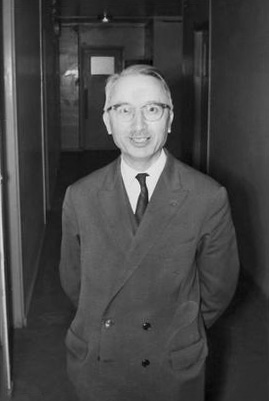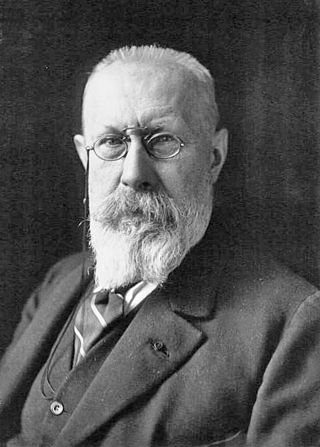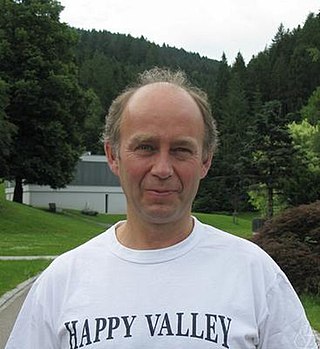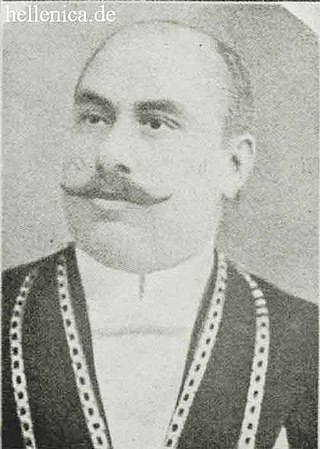Related Research Articles

Henri Léon Lebesgue was a French mathematician known for his theory of integration, which was a generalization of the 17th-century concept of integration—summing the area between an axis and the curve of a function defined for that axis. His theory was published originally in his dissertation Intégrale, longueur, aire at the University of Nancy during 1902.

The École normale supérieure – PSL is a grande école in Paris, France. It is one of the constituent members of Paris Sciences et Lettres University (PSL). Due to its special historical role, large endowment, and influence within French society, the ENS is generally considered the most prestigious of the grandes écoles. Its pupils are generally referred to as normaliens, while its alumni are generally referred to as archicubes.

Henri Paul Cartan was a French mathematician who made substantial contributions to algebraic topology.
The Séminaire Nicolas Bourbaki is a series of seminars that has been held in Paris since 1948. It is one of the major institutions of contemporary mathematics, and a barometer of mathematical achievement, fashion, and reputation. It is named after Nicolas Bourbaki, a group of French and other mathematicians of variable membership.
Continuation of the Séminaire Nicolas Bourbaki programme, for the 1950s.

Paul Émile Appell was a French mathematician and Rector of the University of Paris. Appell polynomials and Appell's equations of motion are named after him, as is rue Paul Appell in the 14th arrondissement of Paris and the minor planet 988 Appella.

Paul Malliavin was a French mathematician who made important contributions to harmonic analysis and stochastic analysis. He is known for the Malliavin calculus, an infinite dimensional calculus for functionals on the Wiener space and his probabilistic proof of Hörmander's theorem. He was Professor at the Pierre and Marie Curie University and a member of the French Academy of Sciences from 1979 to 2010.
André Haefliger was a Swiss mathematician who worked primarily on topology.

Luc Illusie is a French mathematician, specializing in algebraic geometry. His most important work concerns the theory of the cotangent complex and deformations, crystalline cohomology and the De Rham–Witt complex, and logarithmic geometry. In 2012, he was awarded the Émile Picard Medal of the French Academy of Sciences.

Pierre Dolbeault was a French mathematician.

Pierre Lelong was a French mathematician who introduced the Poincaré–Lelong equation, the Lelong number and the concept of plurisubharmonic functions.
In mathematics, the Bochner–Kodaira–Nakano identity is an analogue of the Weitzenböck identity for hermitian manifolds, giving an expression for the antiholomorphic Laplacian of a vector bundle over a hermitian manifold in terms of its complex conjugate and the curvature of the bundle and the torsion of the metric of the manifold. It is named after Salomon Bochner, Kunihiko Kodaira, and Shigeo Nakano.
Jules Joseph Drach was a French mathematician.
Michel Paul Lazard was a French mathematician who worked on the theory of Lie groups in the context of p-adic analysis.

Olivier Debarre is a French mathematician who specializes in complex algebraic geometry.

Georgios Remoundos was a Greek mathematician and a founding member of the Academy of Athens in 1926.
André Martineau was a French mathematician, specializing in mathematical analysis.

Jean-Pierre Demailly was a French mathematician who worked in complex geometry. He was a professor at Université Grenoble Alpes and a permanent member of the French Academy of Sciences.
Jean Cerf is a French mathematician, specializing in topology.
In algebraic geometry, Le Potier's vanishing theorem is an extension of the Kodaira vanishing theorem, on vector bundles. The theorem states the following
Le Potier (1975): Let X be a n-dimensional compact complex manifold and E a holomorphic vector bundle of rank r over X, here is Dolbeault cohomology group, where denotes the sheaf of holomorphic p-forms on X. If E is an ample, then
from Dolbeault theorem,
By Serre duality, the statements are equivalent to the assertions:
References
- ↑ Skoda's homepage
- ↑ Étude quantitative des sous-ensembles analytiques de Cn et des idéaux de functions holomorphes; Skoda, Henri - Notice documentaire IdRef
- ↑ ""Integral Methods and Zeros of Holomorphic Functions" by Henri Skoda, ICM 1978" (PDF). Archived from the original (PDF) on 2016-09-27. Retrieved 2015-10-28.
- ↑ Henri Skoda at the Mathematics Genealogy Project